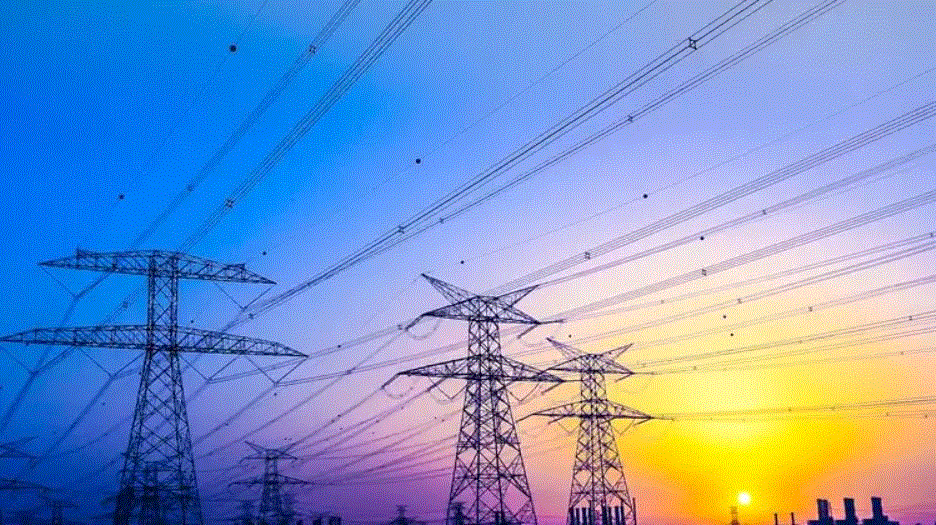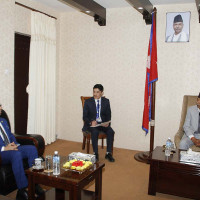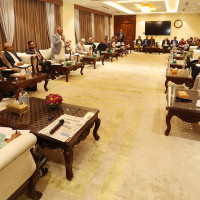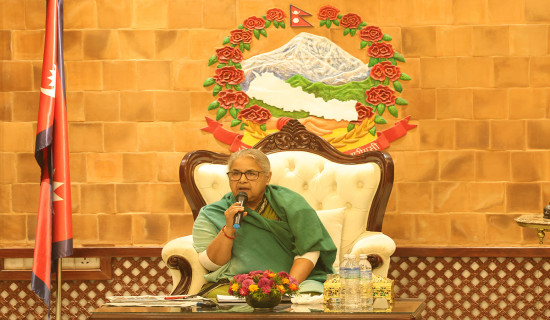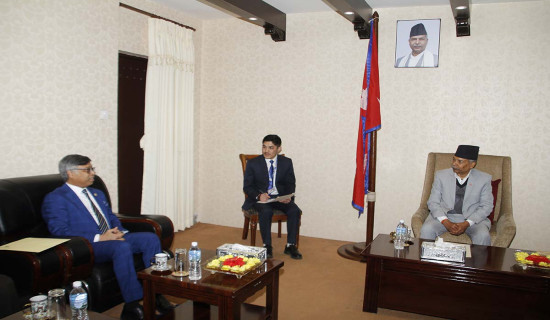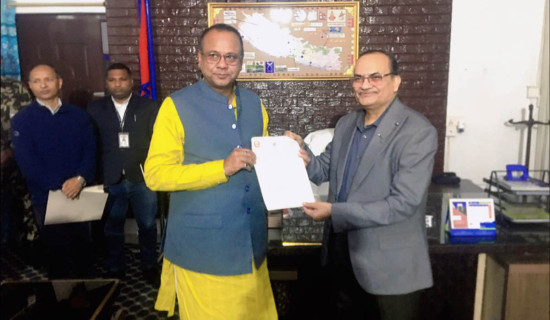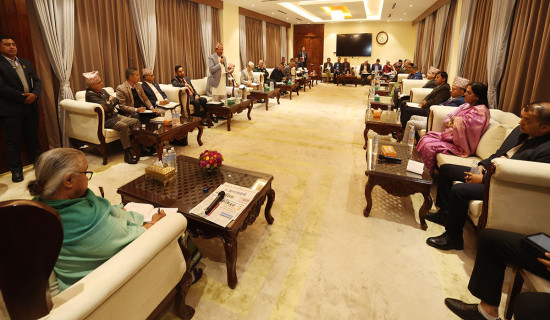- Saturday, 6 December 2025
Govt sees need to invest USD 46 billion in energy sector in 12 years
By Ramesh Lamsal, Kathmandu, Sept 22: The Government of Nepal has prepared ambitious and comprehensive action plans including investing USD 46 billion for the overall development of the country's energy sector by 2035.
The government set the target of investment in that quantity considering the energy sector as the major basis for the country's economic development. The comprehensive action plan that starts in 2023 and ends in 2035 envisages harnessing the country's untapped energy potential.
According to the Ministry of Energy, Water Resources and Irrigation, the action plan was prepared with the goal of addressing the changing situations in the energy landscape of the country.
The 'Energy Development Roadmap and Action Plan 2080 BS' action plan prepared by the task force coordinated by the Ministry's Joint-Secretary Sandeep Kumar Dev encompasses details about investment estimates for projects, transmission lines and sub-stations.
The task force formed after the ministerial decision on July 11 this year included Sanjay Dhungel, Deputy Director-General of the Department of Energy Development, Pradeep Kumar Thike, Deputy Executive Director of the Nepal Electricity Authority, Authority's Director Prabal Adhikari, and Ministry of Energy's Baburaj Adhikari among others.
The task force recently submitted a report containing the ambitious action plan to the Ministry of Energy, Water Resources and Irrigation Shakti Bahadur Basnet. More detailed discussion would be held among the stakeholders on the report before endorsing it by the Council of Ministers, it was shared.
The comprehensive action plan was launched at a time when Prime Minister Pushpa Kamal Dahal 'Prachanda' in his last India visit had inked an agreement to export 10,000 megawatts of energy to India within 10 years and when Bangladesh showed its willingness to import 9,000 megawatts of electricity from Nepal by 2040.
A target has been set to make the installed electricity production capacity of the country 28,000 megawatts by 2035. At present, the country's total installed electricity capacity has reached 2,860 megawatts.
Energy Minister Basnet shared the government has determined a modality of investment by projecting the demand for electricity to be equal to 28,500 megawatts keeping in mind the exports of power within the country as well as neighbouring countries.
Of this, a target has been set to export 15,000 megawatts of electricity to other countries and there should be an investment of 46 billion US dollars for the same.
According to the Ministry, sources equal to eight billion US dollar has been guaranteed so far. Government, private sector and general people would also have a share in the investment towards the energy sector.
Similarly, the capitals of non-resident Nepalis and Nepali migrant workers would also be incorporated with equal importance. The report of the task force has mentioned that 2.6 billion US dollars has already been invested in the country's energy sector so far. However, the report mentioned that sources equal to an additional 39 billion US dollars have to be searched.
Nepal Electricity Authority's income equal to eight billion US dollars would be mobilized in the development of the energy sector till 2035.
Earlier, the government had determined goals of producing 10,000 megawatts of electricity within 10 years. The government has implemented a 99-point action plan, an action plan to end load shedding and the country has received positive achievements in the energy sector.
According to Minister Basnet, two billion US Dollars would be received through the climate investment for construction of the project and transmission line.
Likewise, the government has set the target of investing an additional 500 million USD through the budgetary system for the development of the energy sector. It is also stated that more than 12 billion USD would be mobilized from those who have gone abroad employment, the Nepal Infrastructure Bank and through bonds.
Similarly, a goal has been set to increase the per capita electricity consumption to 1500 units to boost domestic consumption of electricity. It is said the power need not be imported to meet the domestic electricity demand and the excess power can also be exported after the domestic supply is fulfilled. This would help reduce the country's trade deficit.
Employment opportunities would be increased making a positive contribution to the economy in the course of the implementation of the project related to energy development.
As per the same report, at least 50 persons will be employed at the management level for the production of 1,000 megawatts of electricity. Similarly, towards engineering nearly 600 persons will be employed while around 2,000 individuals get employment towards the workforce as supervisors, foremen and the like at the site.
Likewise, nearly 6,000 skilled workers and 25,000 general workers will get employment opportunities. So, when 28,000 megawatts of power is produced in the country, this number of employment would be generated within the country. (RSS)

